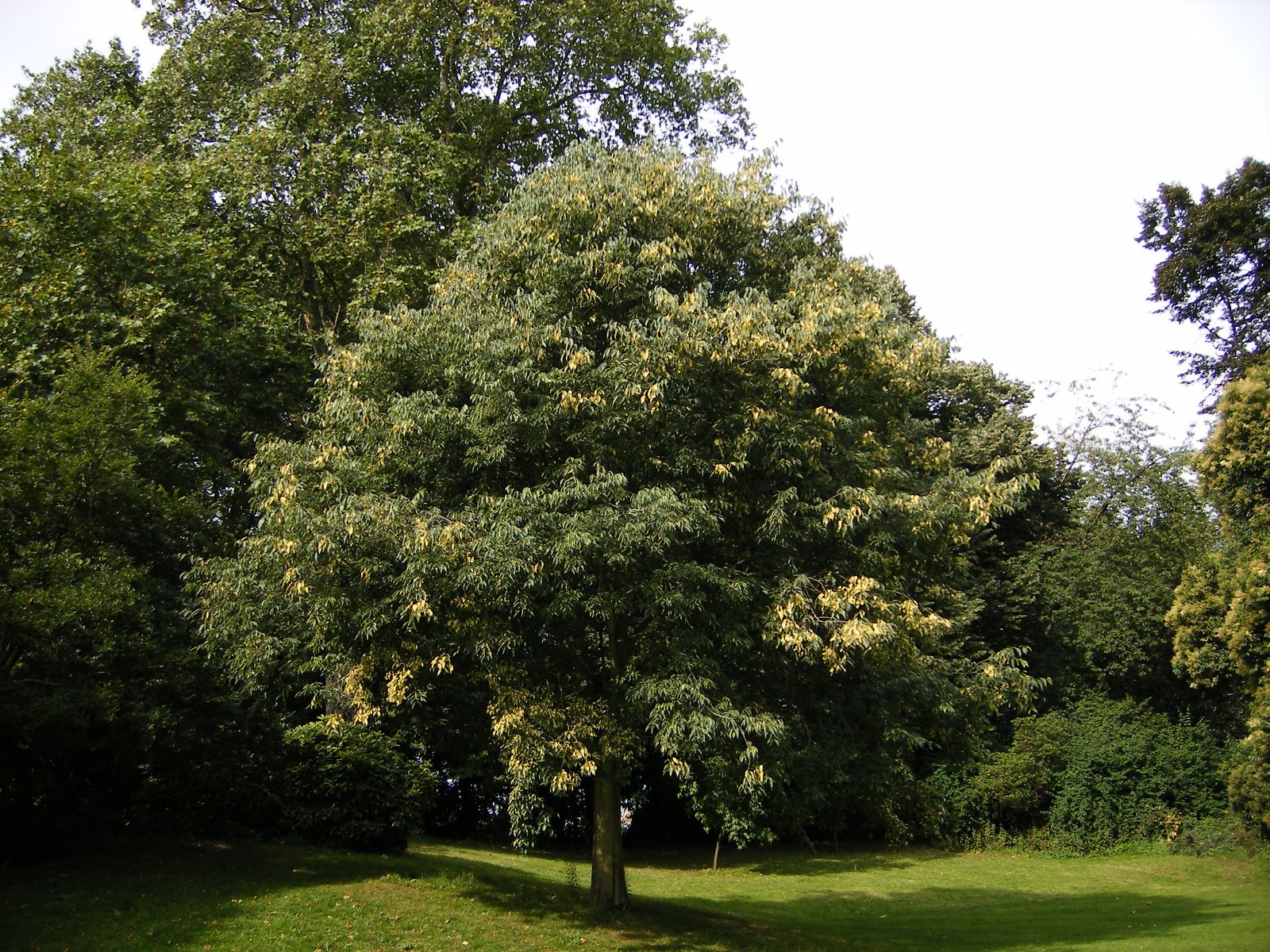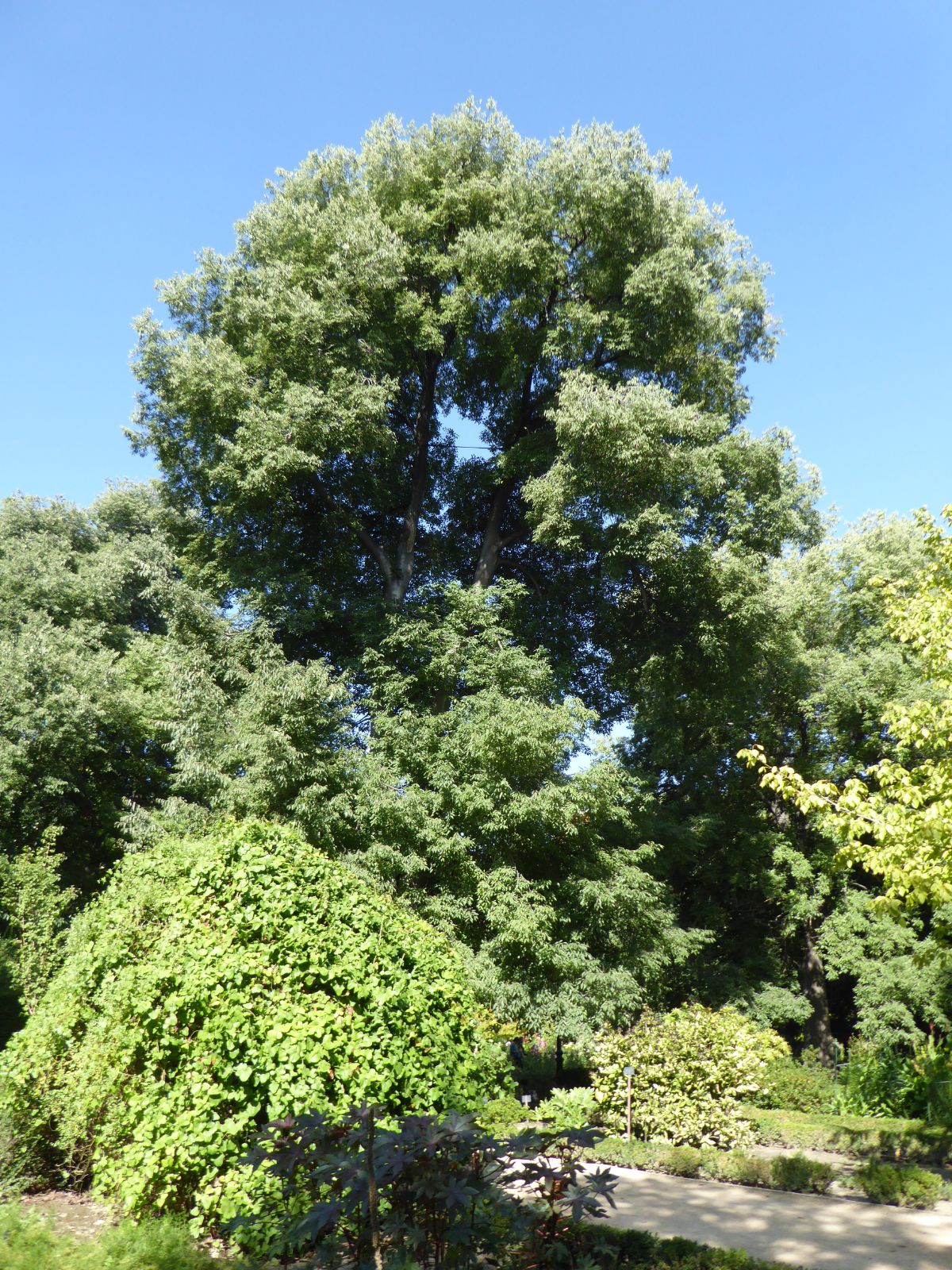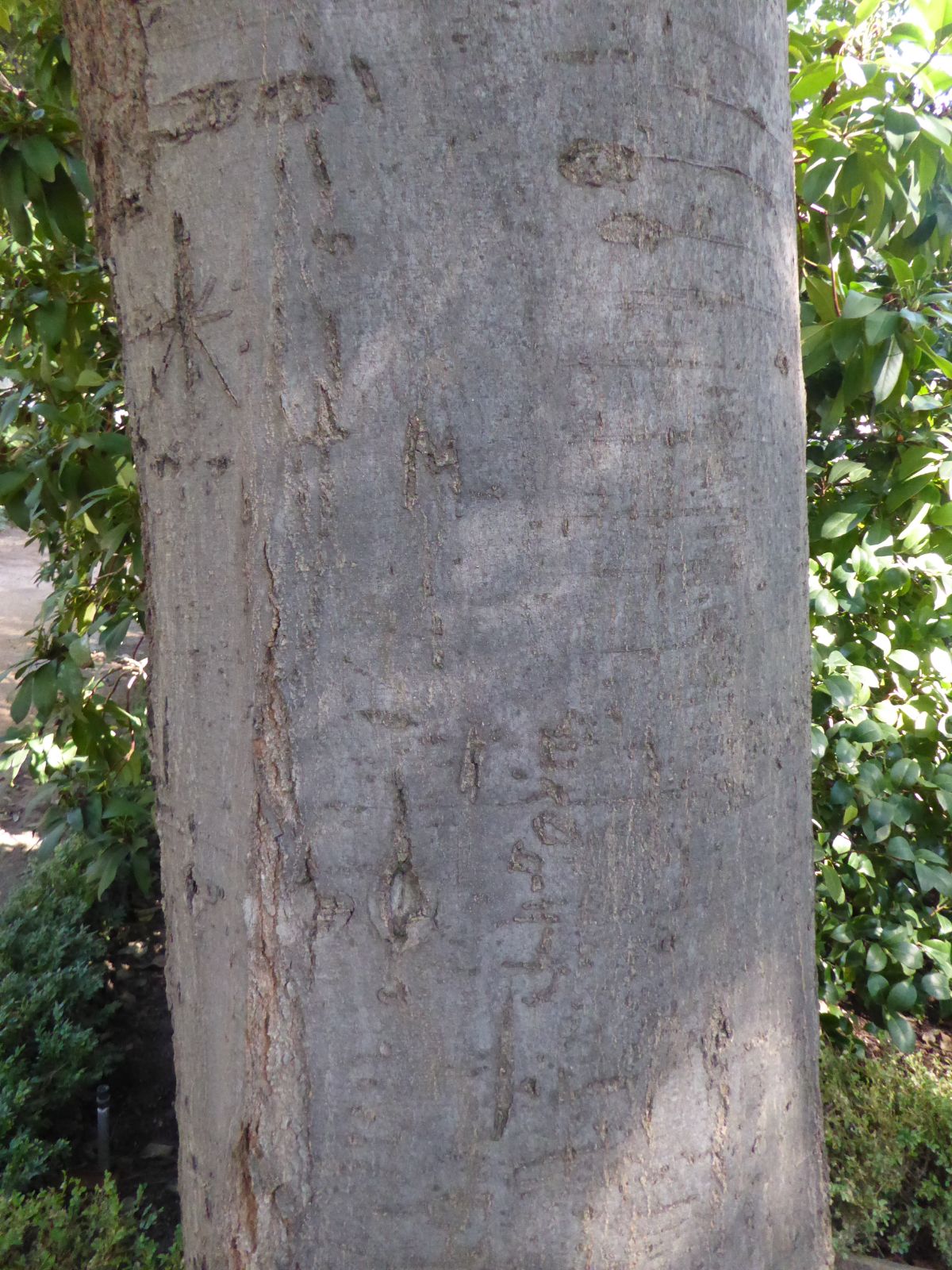Celtis australis
Credits
Article from Bean's Trees and Shrubs Hardy in the British Isles
Recommended citation
'Celtis australis' from the website Trees and Shrubs Online (treesandshrubsonline.
Genus
A tree up to 50 or 70 ft high, with a grey, smooth, beech-like trunk, sometimes 10 ft. in girth; young shoots hairy. Leaves lanceolate or ovate-lanceolate, wedge-shaped at the base, rounded on vigorous shoots, the apex long-tapering, often tail-like, coarsely toothed; 2 to 5 in. long, 5⁄8 to 11⁄2 in. wide; upper side covered with short, stiff hairs which partially fall away, leaving bases which roughen the surface; covered beneath with soft down; stalk downy, 1⁄4 to 1⁄2 in. long. Fruit globose, 1⁄2 to 1⁄2 in. long, reddish then brown, on a very slender stalk about 1 in. long.
Native of S. Europe and the Orient; cultivated in England since the sixteenth century by Gerard and others, but never common. I have raised it several times from seed obtained from various places in S. Europe; but although it makes coarse growths 4 or 5 ft long during summer, these are cut back almost to the base by moderately severe frost. As this is repeated every winter, the base becomes stunted and diseased, and the trees rarely survive more than a few years.
A more recent introduction is hardier but grows very slowly. The large trees mentioned by Loudon in 1838 as being at Kew and elsewhere were probably some other species. What it lacks here, no doubt, is the ripening influences on the wood of its native sunshine. In the south of Europe it is believed to attain the age of one thousand years, and its timber is tough and valuable. In the suburbs of Italian and Dalmatian cities I have seen it as a pleasing small street tree, with neat, rounded heads and smooth, handsome trunks. There are fine specimens of this tree in the Botanic Garden, Madrid. The leaves of young seedling trees are often blotched quite conspicuously with yellow.
In the British Isles no examples of any size have been recorded. Elwes and Henry mention a tree at Hursley Park near Winchester, then (1908) of some age and about 20 ft high; it still exists and is about 20 ft taller. The small tree at Tortworth, Glos., also referred to by them, now measures 35 × 3 ft (1964).
From the Supplement (Vol. V)
This species is also a native of North Africa. In the east it extends into Asia Minor and Transcaucasia.
It was stated at the end of the account that no examples of any size had been recorded in Britain, apart from one at Hursley Park near Winchester. However, several other specimens have been recorded recently: Borde Hill, Sussex, 52 × 5 ft (1979); Grove Road, Shirley, Southampton, 40 × 81⁄2 ft at 3 ft (1979); Lacock Abbey, Wiltshire, 44 × 63⁄4 ft (1979); Bicton, Devon, 40 × 53⁄4 ft (1983).
There are young trees in cultivation raised from seeds collected by Roy Lancaster in the Caucasus region in 1979 (L.318).




